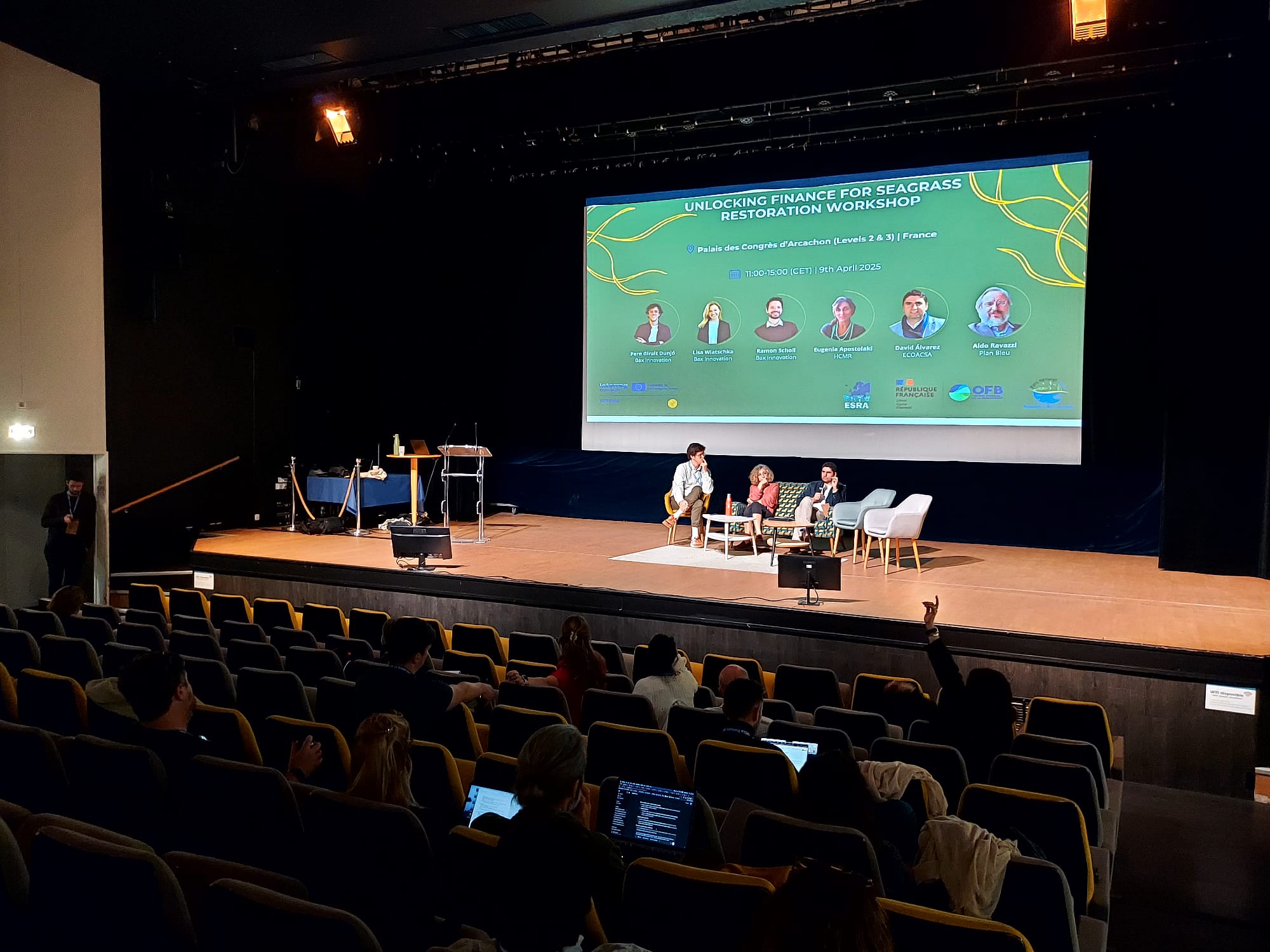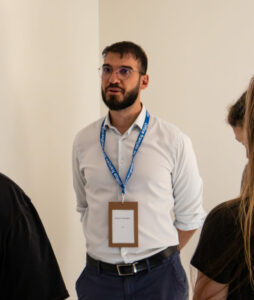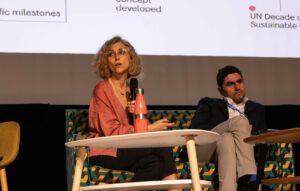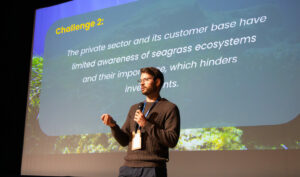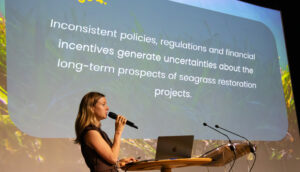The 2nd European Seagrass Restoration Workshop (ESRW25) took place in Arcachon from 8th to 10th April where the wider seagrass restoration community had the opportunity to present their achievements and future plans for seagrass projects and explore key factors that support seagrass resilience through a total of 16 workshops.
The ARTEMIS project, as an Interreg Euro-MED initiative focusing on the acceleration of restoration techniques hosted a dynamic and action-oriented session titled “Unlocking Finance for Seagrass Restoration” on the second day of the event, powered by ARTEMIS project partners Bax Innovation (Spain), HCMR (Greece), Plan Bleu (France), ECOACSA (Spain), EY Denkstatt experts and practitioners.
The workshop tackled one of the most pressing challenges in marine ecosystem recovery: how to secure long-term, scalable financing for seagrass restoration. Despite increasing policy support at the EU and global levels, such as the Kunming-Montreal Global Biodiversity Framework and the EU Nature Restoration Law, the financial mechanisms to implement restoration at scale remain underdeveloped and the financial gap is undeniable. The European Commission recently estimated the financial gap to achieve 2030 Biodiversity targets at €19 Billion every year.
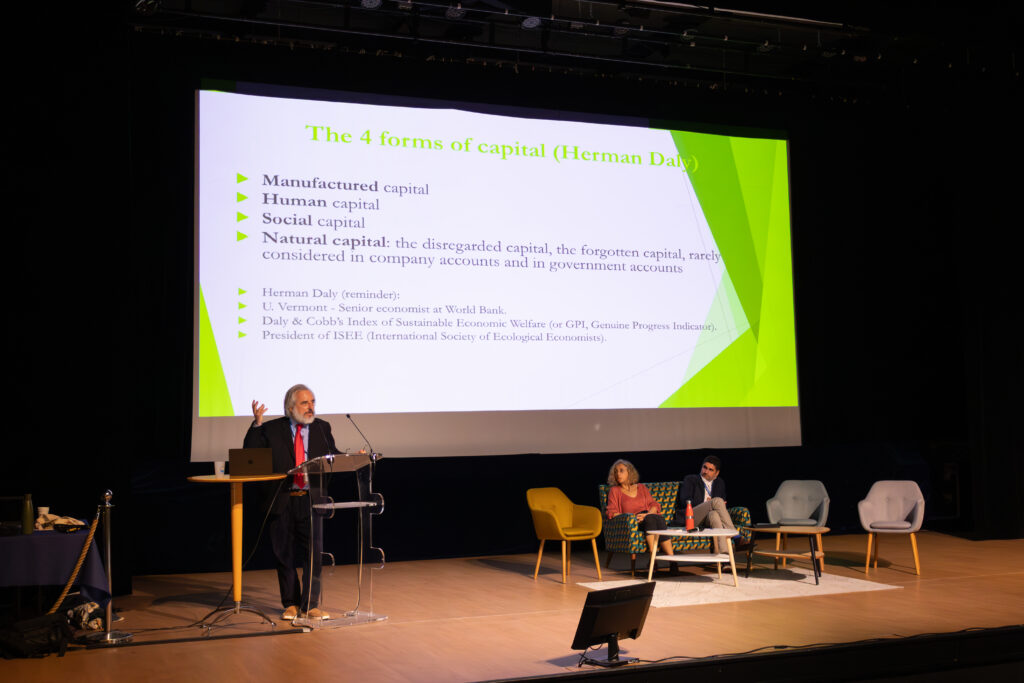
ARTEMIS at ESRW25 | Plan Bleu – Aldo Ravazzi | Arcachon, May 9th, 2025.
The day started with a series of keynote presentations, followed by an engaging Q&A session and discussion with the close to 40 participants:
⇒ Pere Giralt (Bax Innovation) opened the session by setting the stage with three powerful framing insights: the global and European nature finance gap, key findings from the IPBES Transformative Change Assessment, and the critical role of multi-stakeholder collaboration in unlocking finance for seagrass restoration.
⇒ Aldo Ravazzi (Plan Bleu) uncovered the enabling conditions for private investment in restoration, including legal frameworks, institutional challenges, and regulatory opportunities.
⇒ Eugenia Apostolaki (Hellenic Centre for Marine Research) provided field-based perspectives on the critical need for sustained, long-term financing, highlighting gaps between policy ambition and ground-level implementation.
⇒ David Alvarez (ECOACSA) introduced the concept of blue natural capital as a largely untapped opportunity for investment, making the case for developing marketable products based on the value seagrass ecosystem services provide. David shared key insights into the enabling conditions for private sector engagement in seagrass financing mechanisms: transparency, linking regulatory requirements and corporate actions, assurance and verification, clear business models, and effective governance in nature markets, among others.
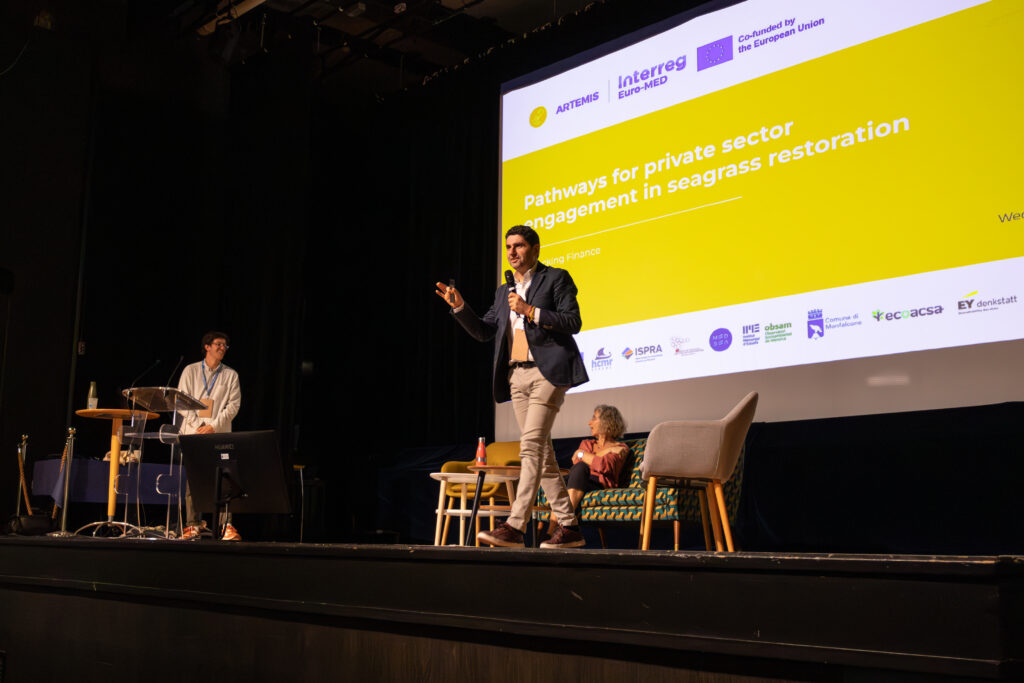
ARTEMIS at ESRW25 | ECOACSA – David Alvarez | Arcachon, May 9th,2025
‘The ESRW2 has been an extremely valuable experience for ARTEMIS. The plethora of actors involved – seagrass experts from across Europe, but also companies already funding restoration efforts in other areas of Europe, innovative solution providers – and so many new perspectives in seagrass restoration like youth empowerment, seascape restoration, combined with valuable exchanges around seagrass-based market mechanisms have been of great added value for our project. When it comes to our work around Payment for Ecosystem Services (PES), our workshop and great discussions leading to and following it have helped up truth-proof our concept, which we will soon be contributing to develop together with ECOACSA, pilot partners and the rest of the consortium.” – Pere Giralt
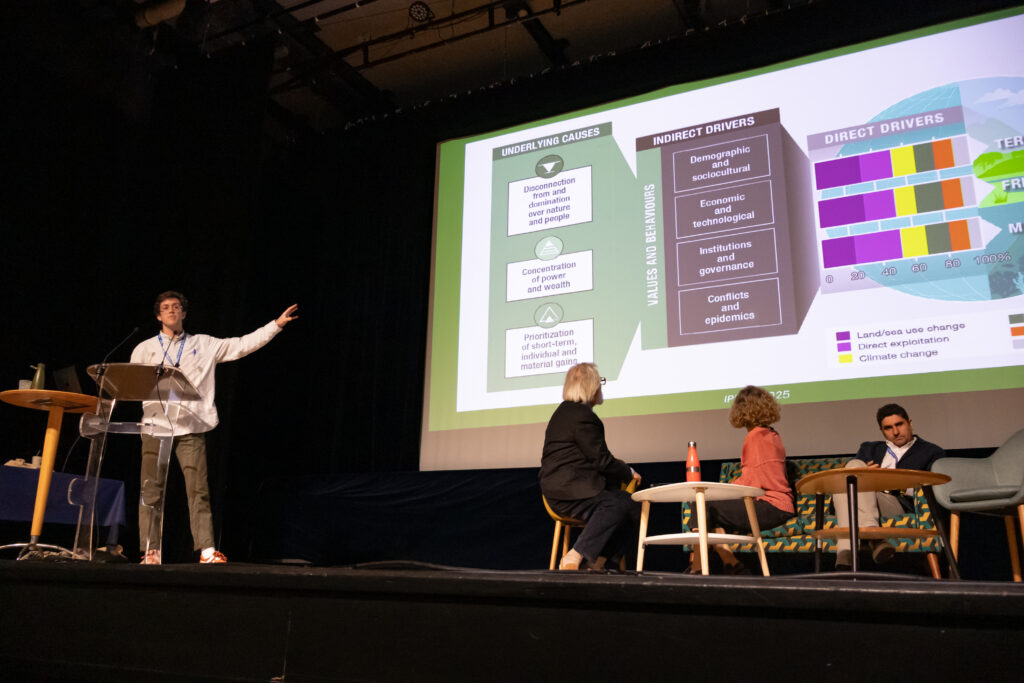
ARTEMIS at ESRW25 | BAX Innovation – Pere Giralt | Arcachon, May 9th, 2025
After a quick lunch break, a collaborative intelligence workshop was facilitated by Bax Innovation and EY Denkstatt. The activity started with participants collectively unpicking four high-level challenges from a multi-stakeholder lens:
- Current funding mechanisms and opportunities are insufficient to meet the needs for large-scale and long-term seagrass restoration.
- The private sector and its customer base have limited awareness of seagrass ecosystems and their importance, which hinders investments.
- Seagrass restoration efforts are currently small in scale, which limits opportunities for large private-sector investors
- Inconsistent policies, regulations and financial incentives generate uncertainties about the long-term prospects of seagrass restoration projects.
After this, participants co-defined specific solutions and action lines that ARTEMIS and the European Seagrass Restoration Alliance as a community of communities should focus on in the coming months and years.
The session concluded with a collective reflection and the outline of next steps, which includes the writing of a whitepaper with key areas of action.
- ARTEMIS partner EY Denkstatt – Martin Georgiev
- ARTEMIS at ESRW25 HCMR – Eugenia Apostolaki
- ARTEMIS at ESRW25 BAX – Ramon Scholl
- ARTEMIS at ESRW25 BAX – Lisa Wiatschka

